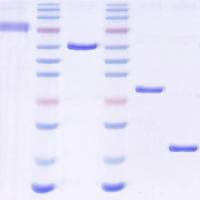Gene Therapy for Treatment of Brain Tumors (HSV-tKIn Vivo Gene Transfer): A Case Study
Despite a high effort in the research of malignant brain tumors, the clinical results in treatment of malignant brain tumors are still very poor. Brain tumors are a major cause of morbidity and mortality in the population. New primary brain tumors develop in 2-4 of 100,000 adults each year (1 ). Recent evidence indicates that the prevalence of primary brain tumors is increasing, especially in the elderly (2 ). The astroglial brain tumors, including the highly malignant glioblastoma multiforme (GBM), are the most common primary brain tumors. For these tumors, the first line of treatment is surgery and almost always radiotherapy as an adjuvant. A variety of patient-management strategies are currently used for GBM, from supportive care to aggressive multimodality approaches. The principal reason for this wide spectrum of approaches is that, despite aggressive therapy, which includes surgical removal of the tumor, postoperative high-dose radiation (60 gy), chemotherapy, and other adjuvant treatments, the prognosis of patients with GBM is very poor (3 -6 ). In a series of NCOG protocols on glioblastoma multiforme patients with Karnofsky performance scores of 60 or higher, who were treated with postsurgical radiation therapy and adjuvant chemotherapy with nitrosourea-based drug combinations, the median survival and time of tumor progression were consistently above 50 and 34 wk, respectively (7 -9 ). The nitrosoureas (BCNU and CCNU), alone and in combination, are the most active cytotoxic drugs for recurrent and progressive tumors, although most of these responses are transient and in patients with well-differentiated gliomas. When glioblastoma multiforme recurs, which happens in nearly 100% of all cases, however, the median survival from the start of treatment is about 6 mo, with only 22% of patients surviving longer than 1 yr (11 ). Therefore, there is a great interest in local treatment modalities. A wafer impregnated with carmustine, for use as an implant after surgical removal of recurrent GBM showed a prolongation in the median survival time of only 2 mo, from 20 to 28 wk in a study with a total of 222 patients. In another study, a median survival of 9 mo was found in a selected group of patients with recurrent GBM who underwent a second operation, but a reasonable quality of life in those patients was limited to 10 wk (12 ).
![预览]()






